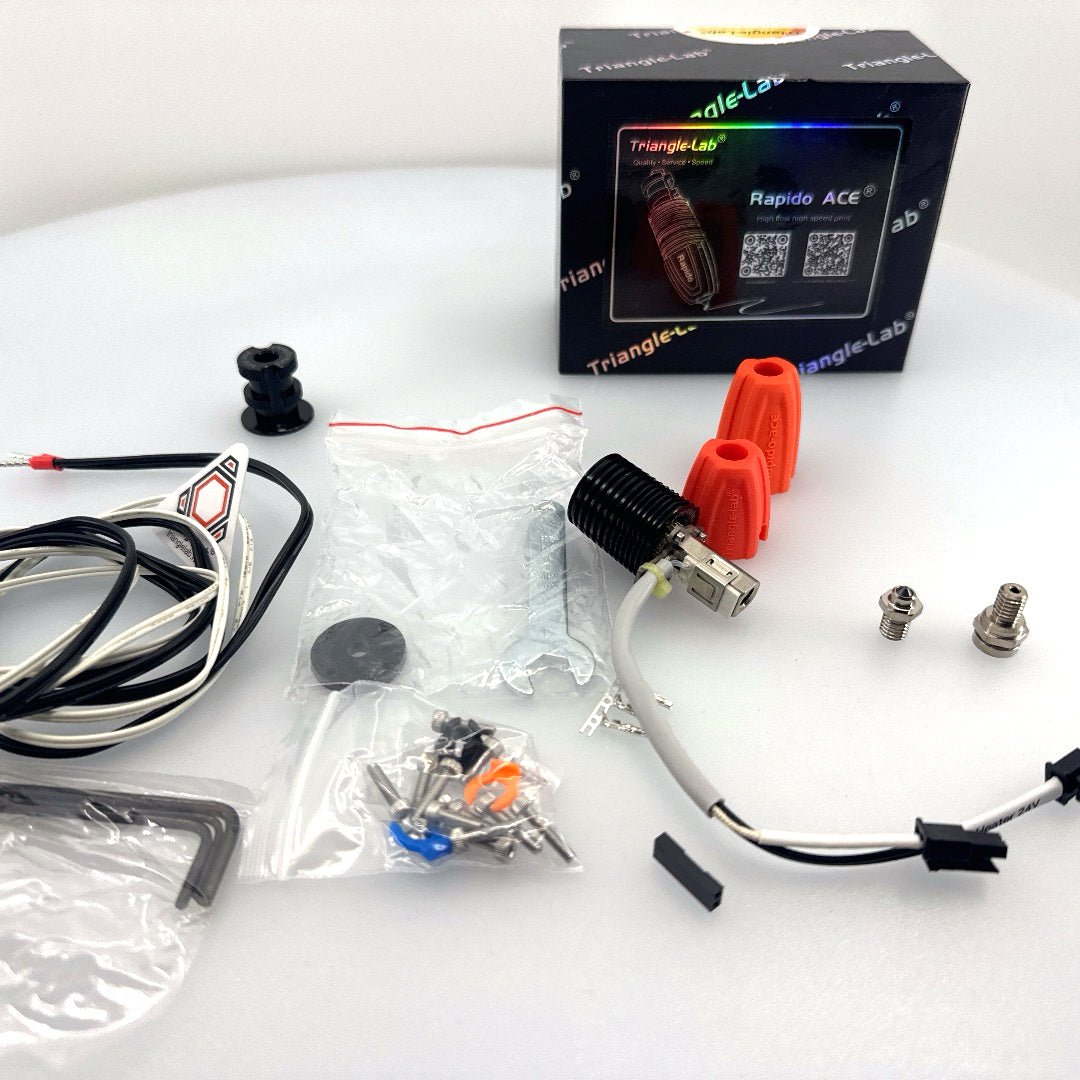Description
Our friends over at TriangleLabs have taken the proven Rapido 2 hot end design and made its even better. This isn't your typical Rapido!
This includes an embedded thermistor for greater precision in temperature readings and features a copper alloy 2-stage heatbreak. This model with the 2 stage insulated heatsink design prevents heat from the heat block screws being conducted further upwards and creating heat creep problems.
This hotend features a smaller heatsink but is still compatible with the Rapido or Dragon mounts on your printer. The rest fits the bill of the Rapido 2, with plaid copper parts, ceramic heater core, and copper nickel plated heat block.
From our friends:
About Heatsink
Carefully designed internal temperature sensor formore accurate and stable heater block temperature readings.
The tapered heatsink cooling section ensures effective and tight contact. The cold end of the heat breaker only comes into contact with the coldest top of the heatsink, ensuring that the cold end temperature of the heat breaker is as low as possible, reducing the likelihood of heat creep.

▉About Flange Insulation
The split stainless steel flange design reduces heat loss from the heating block and also reduces the potential for damage to the filament capillary path during tightening.

▉Embedded temperature sensor
It can measure the temperature more accurately.


▉Dimensions:

▉Test Report 01:
For detailed documentation, please see the following link:
https://drive.google.com/drive/folders/1JpKY0K64ezeTtLR7X6bPHKADfP-oV6TX
▉Rapido Ace & Rapido Original Flowrate Comparison Test
Introduction to the experiment:
The model and slicing parameters close to the practicalization were used for this print comparison test. In order to facilitate the observation of the experiment The slicing software increases the speed from low to high at fixed height intervals, performs the printing and then records the maximum flow rate that can be achieved by both hot-end under exactly the same conditions by observing until the printing results are unacceptable.
Test conditions:
Slicing software: PrusaSlicer 2.6.0
Model: Flow Rate Test Geometry from E3D online (Figure 1)

Nozzle V6 style brass 0.6mm
Slicer settings:
layer height 0.3mm
perimeter 1
extrusion width 0.75mm
PETG@260°C
Speed For every 2mm increase in height, the speed increases by 5%.
Flow Rate Calculation Observe and record the maximum flow rate achieved before the print becomes unacceptable.
Test Results:

▉Test Report 02:
Rapido ACE & Rapido original heat breaker working temperature Comparison
Experimental overview:
In the same fixed and heat dissipation conditions, the temperature difference between the two hot-end in the same position in the cold end of the heat breaker is compared and tested.
Temperature measurement method:
Measure the temperature inside the nozzle of the heater block with a thermocouple and compare it with the temperature set by the printer at that time, and record the actual temperature of the printer when the thermocouple measurement reaches 250 degrees Celsius to be used in the comparison experiment. For example, if the temperature inside the nozzle is 250 degrees Celsius when it is set and stabilized at 241 degrees Celsius in the printer, the hot-end will be set at 241 degrees Celsius in the next steps, and then the temperature will be measured again to confirm the stabilization, and then a comparative experiment will be conducted on this premise.
 Conclusion The measured temperature at the critical cold end of the heat breaker of the TL Rapido Ace is significantly lower than that of the TL Rapido original. This means that the TL Rapido Ace has a better ability to block heat transfer and has a better thermal design, which can have the potential benefit of preventing thermal creep from occurring and reducing the chance of filament paths becoming clogged, thus improving print success rate.
Conclusion The measured temperature at the critical cold end of the heat breaker of the TL Rapido Ace is significantly lower than that of the TL Rapido original. This means that the TL Rapido Ace has a better ability to block heat transfer and has a better thermal design, which can have the potential benefit of preventing thermal creep from occurring and reducing the chance of filament paths becoming clogged, thus improving print success rate.






